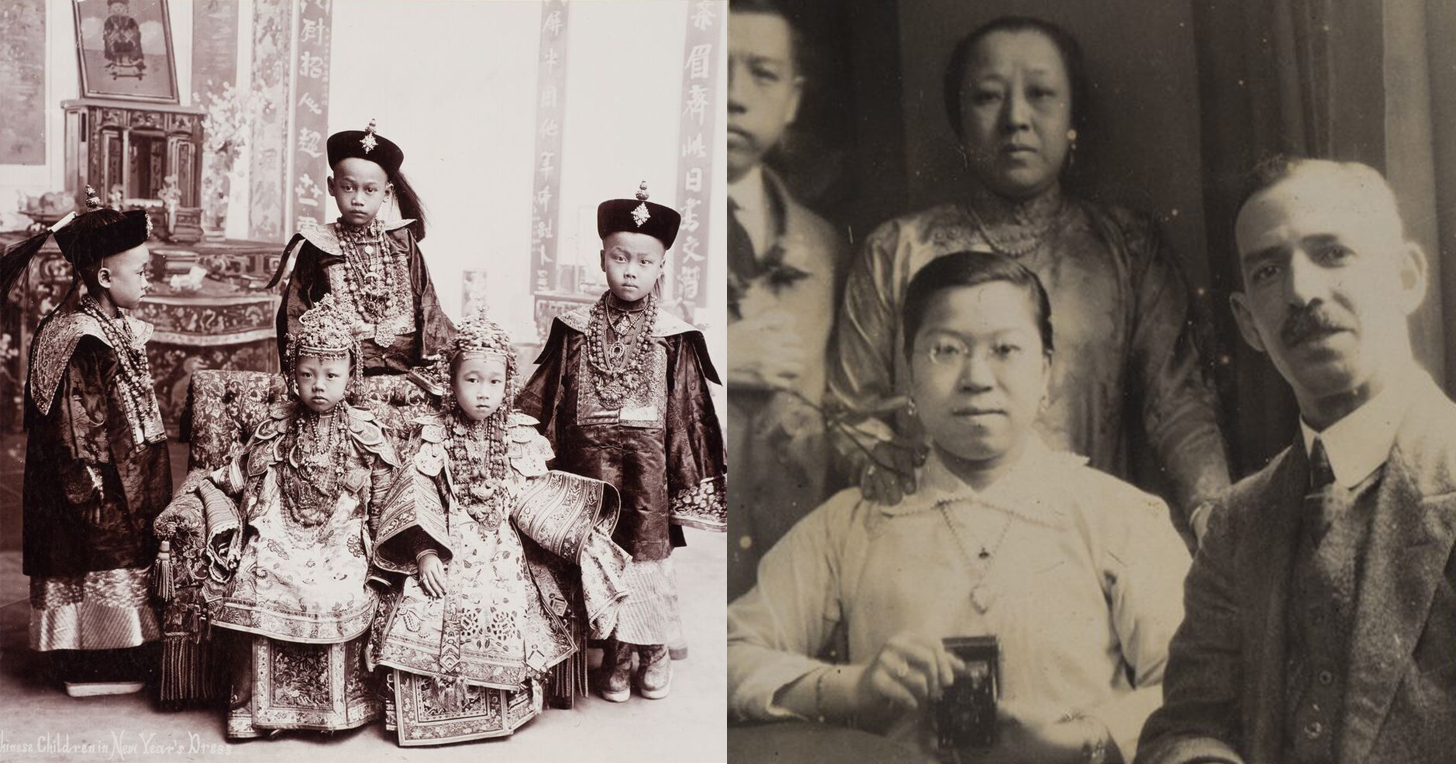I've heard about the Peranakan Museum for the longest time, but it is not something that I paid particular attention to.
Because, you know, I'm not Peranakan.
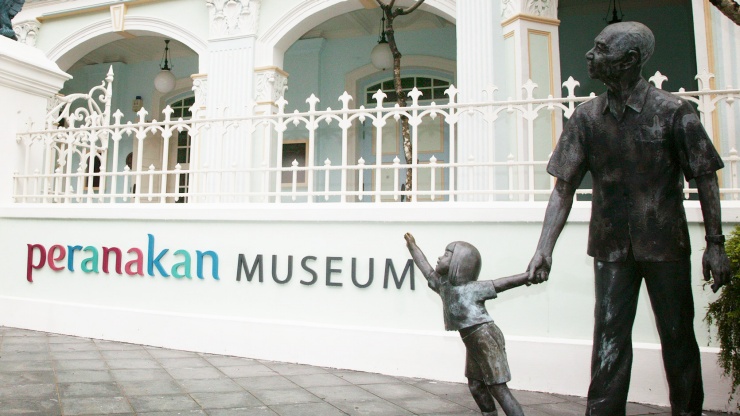
And then my colleague and I were invited to visit the Peranakan Museum, so we jumped at the chance to go.
The latest exhibition is titled, Amek Gambar: Peranakans and Photography.
Amek Gambar literally translates to "taking pictures."
I envisioned myself spending most of the time making sardonic remarks about the display pieces, since that's half the fun of every museum visit.
Or maybe I could learn something.
Earliest photo of Singapore on display
We were greeted by the exhibition's guest curator Peter Lee, whose parents Mr and Mrs Lee Kip Lee generously donated many of the exhibits on display.
An independent art and heritage consultant, his job is a tough one, even though he really didn't have to: Impress upon us the importance of these exhibits, when I was completely clueless about Peranakan culture.
One of the first items we were introduced to resembled an oval photograph that is framed up.
It was, in fact, the oldest known surviving photograph of Singapore, which depicts a panoramic view of Boat Quay along the Singapore River. It was taken in 1844 from Government Hill.
The photograph, which consists of a singular image on metal, is called a daguerreotype.
Apart from the name being a mouthful, the process of making one is not easy as well.
The image had to be projected through a lens into a camera, then fixed with light-sensitive chemicals onto a metal surface. When the process was first invented, the exposure time could take upwards of eight hours.
Invented and named after French creator Louis-Jacques-Mandé Daguerre in 1839, it made waves worldwide then as it was the earliest type of photograph.
This oldest known photograph of Singapore is certainly highly significant, given that it was taken a mere five years after the invention of photography. And it provides us a rare insight into what Singapore looked like in the 1840s.
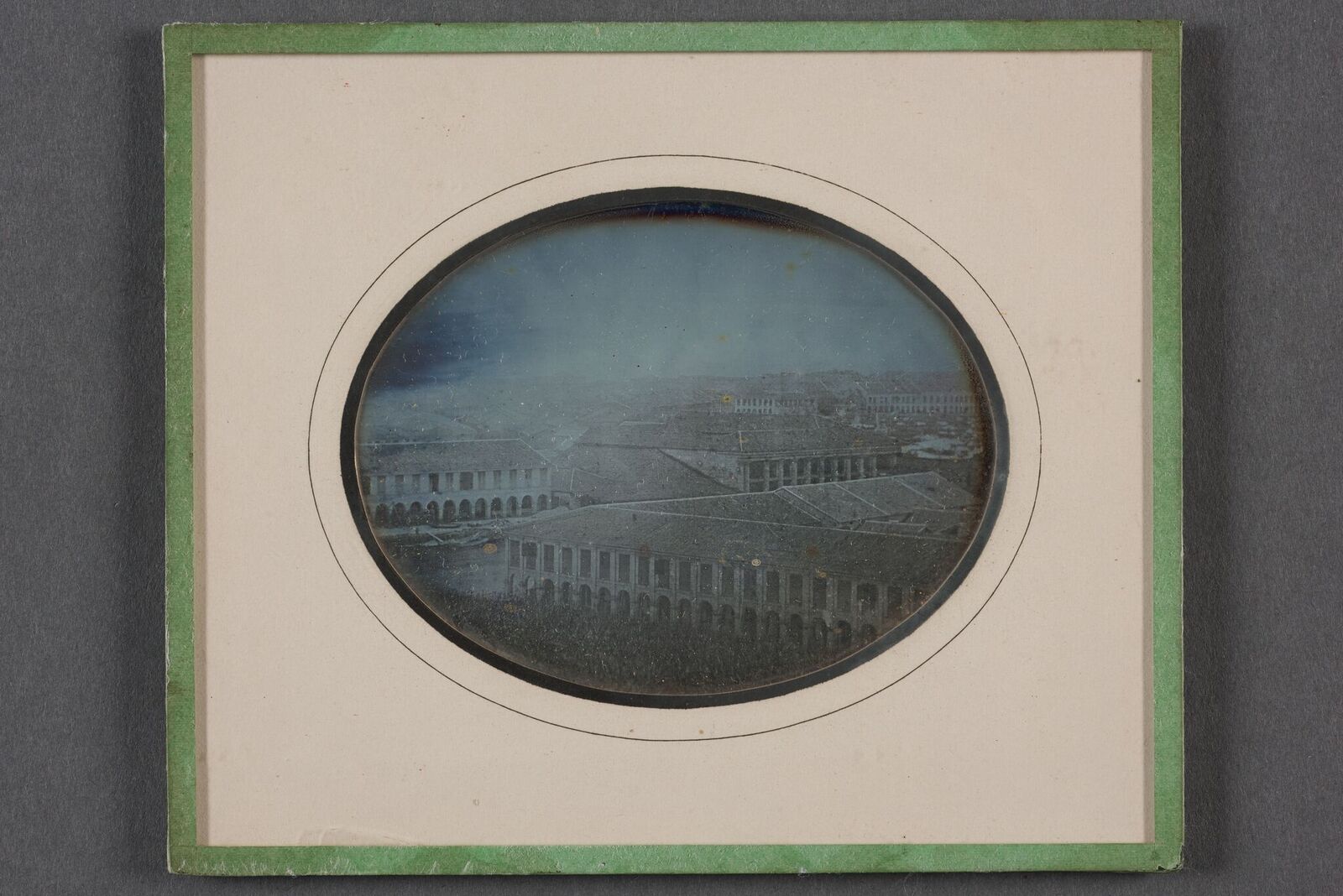 Boat Quay and the Singapore River from Government Hill (Fort Canning). Image via Peranakan Museum.
Boat Quay and the Singapore River from Government Hill (Fort Canning). Image via Peranakan Museum.
This was nice and all, but what does this have to do with Peranakan culture? Not much, apparently, but still fascinating, considering it provides a rare insight.
The photograph quality may not seem like much, but it is remarkably well-preserved, largely due to its outer casing.
Photography techniques
We were then introduced to a pair of almost identical photographs, which depicted the late Tan Kim Ching and his family.
Tan Kim Ching? Who's that?
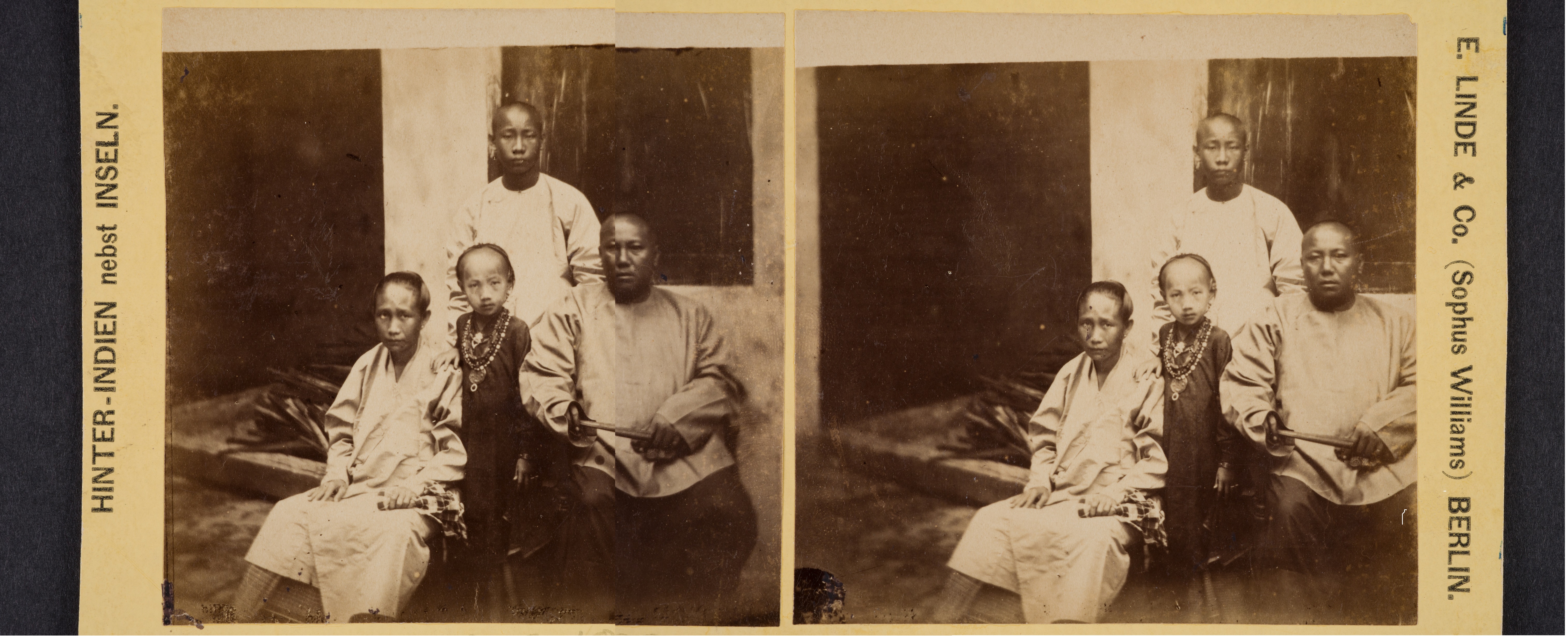 Tan Kim Ching and family. Image via Peranakan Museum.
Tan Kim Ching and family. Image via Peranakan Museum.
Tan Kim Ching is the eldest son of Tan Tock Seng, a well-known entrepreneur and philanthropist of Hokkien descent.
Although he may be overshadowed by his more famous father, who has a hospital named after him, Tan Kim Cheng was an extremely prominent member of the Peranakan community.
Back to the double images.
The set of images were called stereoscopic photographs, or stereoviews in short.
By presenting two photographs of the same image taken at slightly different angles, an illusion of depth could be created. The pair of images pasted on a card would be viewed through a binocular viewer, which would create a single three-dimensional image.
This image is particularly fascinating as it is the oldest photograph on paper in the Singapore National Collection.
From a historical perspective, images like these are one of the only ways we can observe how the past was like. This is also a reminder that photography in those days was limited to the very few who could afford to have their portraits taken.
I was particularly curious about the background of the photograph, since it looked rather ordinary and plain.
Considering Tan was one of the richest men in Singapore at the time, I would have expected a grander background for the historic photograph. Perhaps he did not realise at the time that the photograph was going to be preserved for years to come.
I also wondered why nobody was smiling for the camera, but I just thought to myself that if I had to stare at the camera for such a long time while staying still, I wouldn't really be smiling either.
Selfie from the past
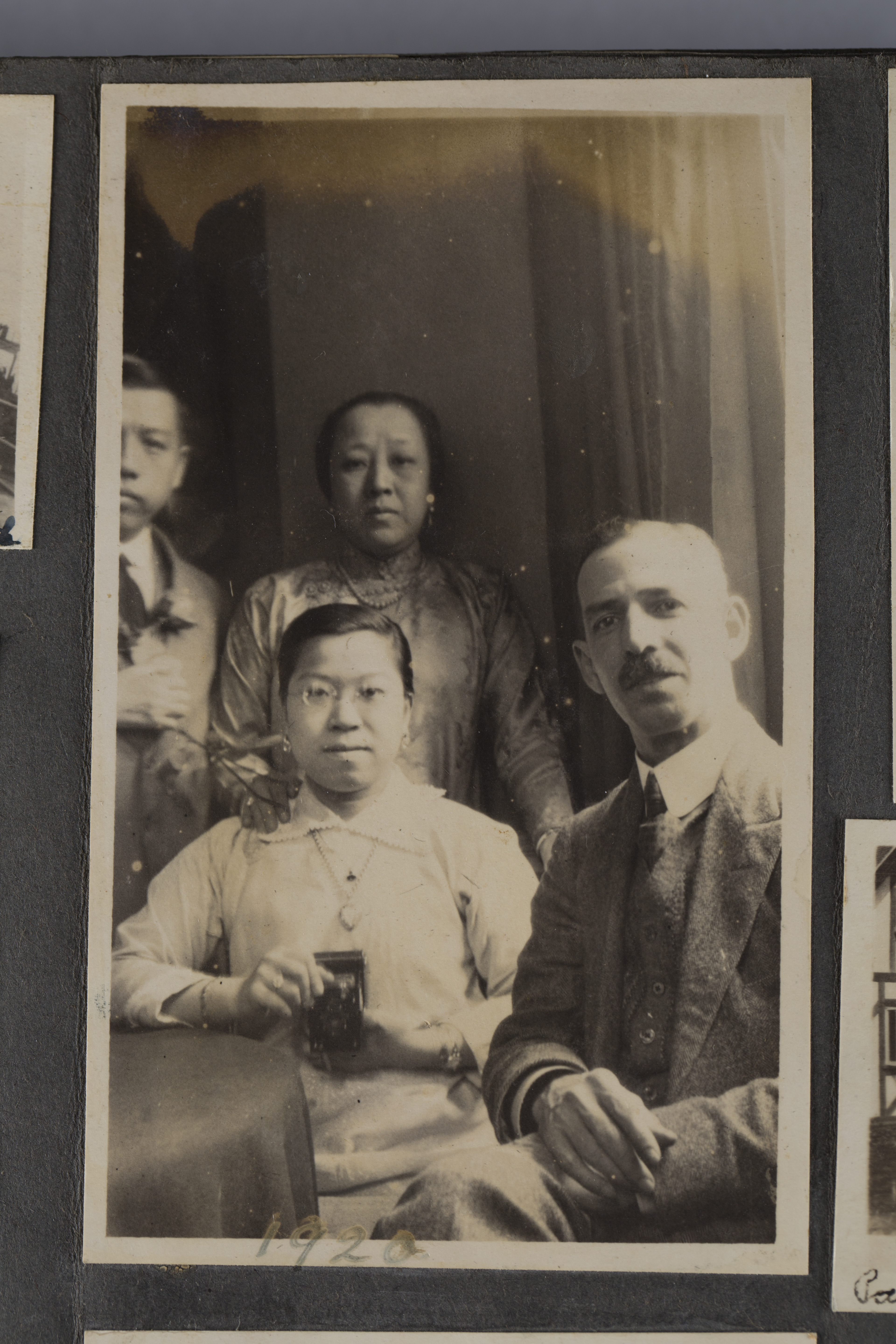 Lee Poh Neo's "selfie". Image via Peranakan Museum.
Lee Poh Neo's "selfie". Image via Peranakan Museum.
We were also introduced to an early "selfie" by Lee Poh Neo, daughter of Lee Choon Guan, a prominent Straits Chinese businessman and philanthropist.
While the term "selfie" only appeared in general usage only from about 2005, self-portraits with a camera date back to the dawn of photography.
Before front cameras on smartphones were a thing, a "selfie" was often achieved with the help of mirrors or timings. This particularly "selfie" depicted Lee Poh Neo, her mother Tan Teck Neo, cousin Lee Chim Tuan and an unidentified European friend.
The photograph was taken in front of a mirror, possibly with a Kodak folding camera, in London in June 1920.
Since exposure times for such photographs were much longer than what we are accustomed to, the group of four likely spent quite some time staring at themselves in the mirror, which would be quite a hilarious sight.
Imagine the four of them posing for what seems like an eternity, mentally telling themselves not to scratch their noses. Personally, if I was in that situation, I would probably have started laughing and ruined the photograph for everyone.
Also, the framing of the photograph could use some work, since not everyone is fully in frame (maybe Lee was annoyed at her cousin).
Then again, there were no viewfinders on early Kodak cameras, I suppose I shouldn't be too harsh on the composition of the photograph.
Full-length painting
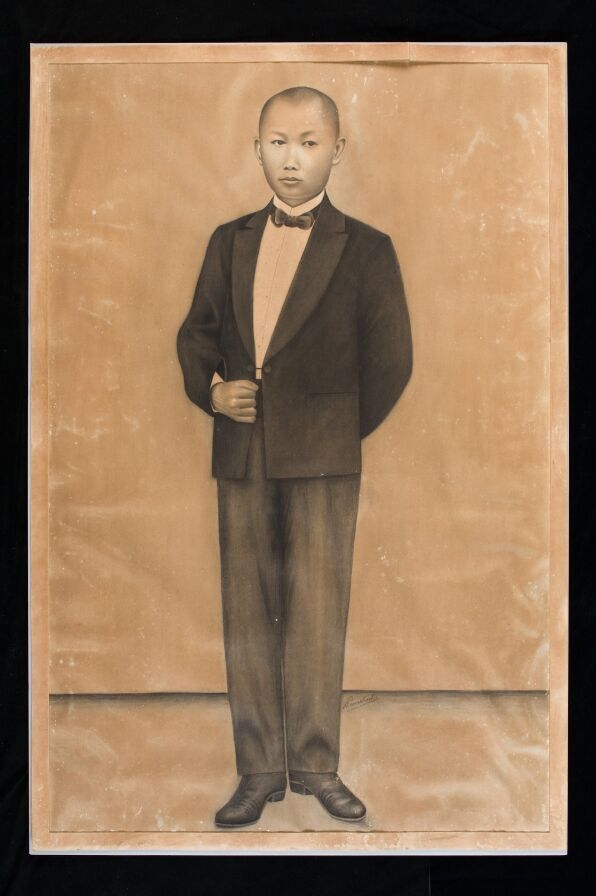 Portrait of a young man. Image via Peranakan Museum.
Portrait of a young man. Image via Peranakan Museum.
From afar, this full-length portrait of a boy in a suit looked extremely vivid.
As we approached it, I became aware that it was not in fact a photograph, but a full length painting, albeit an extremely life-like one.
Portrait painting studios emerged in Singapore at about the same time that photography was invented.
Since many photographs were of the daguerreotype variety, which were not able to be replicated, there was a demand for painters to act as "daguerreotype copiers".
Essentially, they were artists who would paint portraits based on photographs. Copying images back in the day was a much more time-consuming process, unlike now where photos are created unthinkingly most of the time.
On a sadder note, since most portraits of this size during the time period were ordered primarily for display in ancestral halls, this painting can be said to be quite abnormal, since the subject is relatively young. It is possible that the subject of the painting has already passed away when the painting was commissioned, so this was a charcoal painting based on an earlier photograph of the subject.
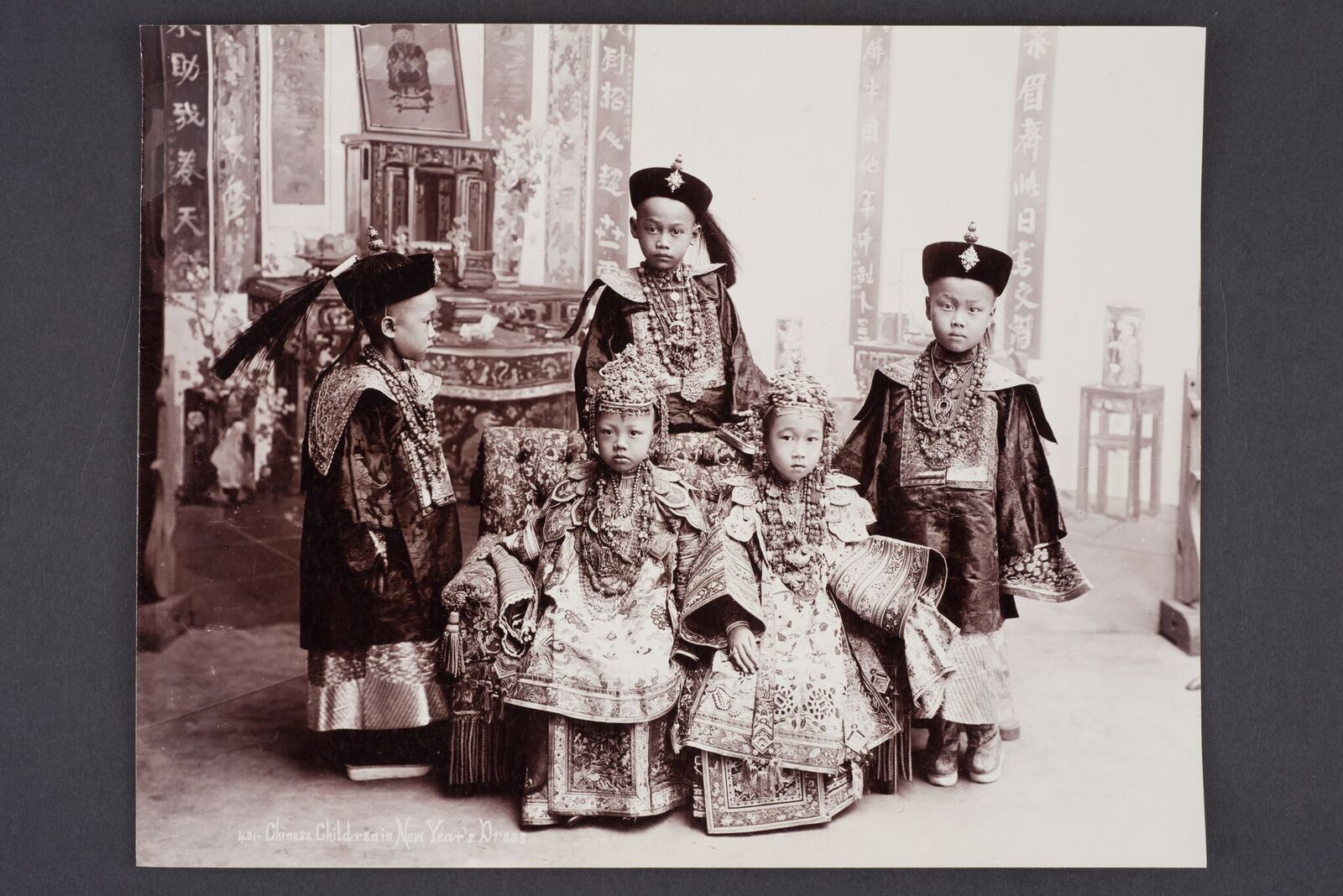 Chinese Children in New Year's Dress. Image via Peranakan Museum.
Chinese Children in New Year's Dress. Image via Peranakan Museum.
By the early 1900s, there were many Western photography studios, which catered to both visitors and local residents.
The studio established by the German photographer Gustave Richard Lambert in 1877 became one of the most famous and enduring in Singapore.
They produced many Peranakan-themed photographs for European travellers to bring home as "Chinese" images. Essentially, they were stock images decades before the stock photo industry even existed, and way before Photoshop was a thing.
The scene was set more deliberately than other photographs of Peranakans then, who did not usually put much effort in curating the background of their photographs.
The photographer went to great lengths to create the right ambience, dressing the children in elaborate Chinese-style New Year costumes and using a Peranakan ancestral hall as the backdrop of the photograph.
For many Europeans, such photographs were their first idea of how Chinese people looked like, so it was rather important to dress the subjects up in their best clothes. I suppose this was something like choosing a good profile picture.
Oh, and somebody really should have told the kid on the left that he was staring in the wrong direction.
Modern photography
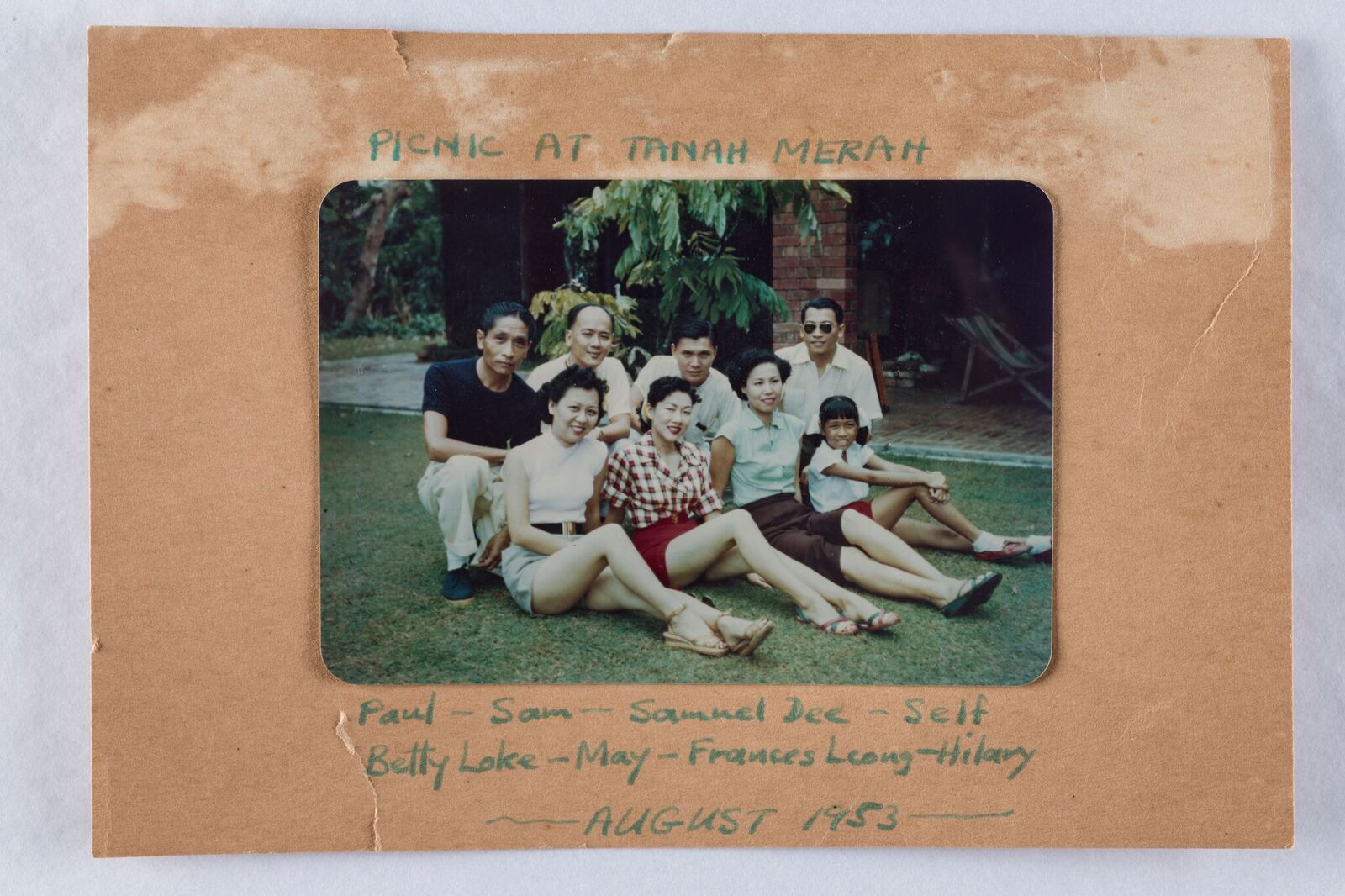 Picnic at Tanah Merah. Image via Peranakan Museum.
Picnic at Tanah Merah. Image via Peranakan Museum.
Colour photographs were available in Singapore after WWII, but this was originally a tedious and expensive process.
By the 1960s, companies like Kodak started to use lower quality materials, in order to reduce cost.
While this made colour photography more accessible to the masses, colour photographs lost its quality and photographs from the 1960s tend to be more faded and yellowed.
The quality of the photograph is definitely remarkable, considering it has been 65 years since it was taken.
Looking closely at the photograph, I wouldn't have been surprised if it was a recent photo, if it wasn't for the retro look that everyone was decked out in.
The Peranakan Museum: Pictures through an Asian lens
In between snarky comments about some of the photographs, I have to say that I actually did learn a lot from the visit to the museum.
While many Western photographs tend to portray a very glamorous and well-curated image of the past, I find that many of these Peranakan-related photographs give a realistic and down-to-earth view of Singapore's past.
Even as someone who is not of Peranakan descent, this visit was still an enriching experience, as photography is ubiquitous and such an automatic process these days.
Photographs back in the day were rare, and often shot through the lens of Europeans.
Early photography in Southeast Asia was largely an European import, and a lot of the early photographs that still remain feature mainly Western subjects.
This was largely because the art of photography was still in its infancy, and it was prohibitively expensive for many at the time. The Peranakans were generally more affluent than other Chinese at the time, mainly because they have had more time to build up their wealth.
While the Peranakans have been in Malaya for many generations, some stretching all the way to the 15th Century, many of the Chinese then were merely transient workers, hoping to make their fortune before returning to China.
This means that many early photographs of Singapore, and Singaporeans, were related to the Peranakans.
After all, it wasn't until the early 1900s that mass market Kodak cameras began to gain traction.
Suffice to say, if one is interested in the history of Singapore in general, then perhaps the Peranakan Museum is a good place to start.
[related_story]
Top image via VisitSingapore
If you like what you read, follow us on Facebook, Instagram, Twitter and Telegram to get the latest updates.
